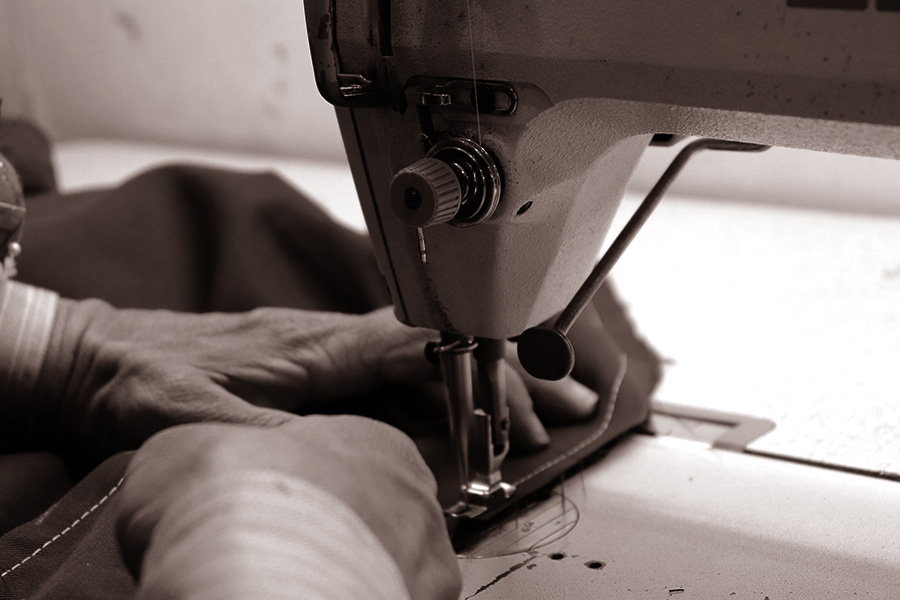Tailor Perth Quality: Where Quality Satisfies Personalized Tailoring
Tailor Perth Quality: Where Quality Satisfies Personalized Tailoring
Blog Article
Comprehending the Tailoring Refine: From Material Selection to Last Suitable for the Suitable Wardrobe
The customizing process is a complex interaction of art and scientific research, beginning with the vital choice of fabric selection and finishing in the specific adjustments of final fittings. Each textile type brings one-of-a-kind qualities that influence not only the aesthetic appeal yet likewise the garment's longevity and viability for numerous events.
Significance of Fabric Choice
Picking the appropriate material is important in the tailoring procedure, as it directly affects the convenience, sturdiness, and total aesthetic of the last garment (tailor perth). The selection of material establishes the structure for the garment's style, performance, and capability. Different fabrics have one-of-a-kind homes, such as breathability, weight, and stretch, which can considerably influence how the garment drapes and fits the body
In addition, material selection affects the garment's long life and simplicity of care. Premium fabrics can stand up to damage, keeping their appearance and framework in time, while lower-quality products may lead to pilling or fading. Furthermore, the best textile contributes to the garment's ability to transition throughout events and periods, therefore improving convenience.
A customized item made from a proper textile not just showcases workmanship however also raises the wearer's self-confidence. Comprehending the subtleties of fabric choice is paramount for any kind of tailoring endeavor. It makes sure that the final product not just fulfills the visual needs of the client however additionally straightens with useful requirements, thereby achieving a harmonious balance in between type and function in the customized closet.
Kinds Of Fabrics and Their Uses
Recognizing the various kinds of textiles readily available is important for making informed choices during the customizing process. Each fabric possesses one-of-a-kind qualities that determine its viability for details garments and events.
Its convenience permits it to be tailored into everything from t shirts to dresses. Its all-natural elasticity assists garments maintain form over time.
Silk exudes luxury and is light-weight, making it best for eveningwear and fragile blouses; nonetheless, it calls for careful handling as a result of its fragility. Bed linen, with its textured coating, is a preferred choice for cozy environments, giving a crisp and ventilated feeling, however it wrinkles conveniently, which may affect the garment's look.
Synthetic textiles, such as polyester and nylon, offer toughness and resistance to creases, making them appropriate for day-to-day wear and active clothes. Recognizing these material kinds and their residential or commercial properties enables better decision-making, guaranteeing that each customized piece not only fits well yet additionally lines up with the desired purpose and event.
The Tailoring Methods Clarified
The art of customizing relies upon a range of strategies that transform textile into well-fitted garments. Central to this process is pattern drafting, where a tailor creates layouts based on the customer's measurements and preferred design. This preliminary action makes certain that the garment will certainly fit the user effectively prior to any kind of cutting occurs.
When patterns are developed, cutting methods come into play. Accuracy is critical as errors can cause misfitting garments. Tailors typically utilize various cutting methods, such as single-layer reducing for complex designs and multiple-layer cutting for performance on common patterns.
Basting is another crucial strategy, permitting dressmakers to temporarily sew fabric items with each other for a preliminary fitting. This approach uses the possibility to analyze the drape and general shape prior to last sewing.
Seaming techniques, consisting of french seams and flat-felled joints, boost the garment's longevity and visual appeal. Tailors also use methods such as interfacing and padding see here now to offer structure and shape to certain areas, like shoulders and collars.
Lastly, ending up methods, including hemming and side finishing, make sure the garment's durability while offering a polished appearance. Together, these methods develop the backbone of efficient customizing, causing charming, custom-fit apparel.
Fitting Changes and Factors To Consider

Trick considerations include the shoulder fit, which must neither droop nor limit activity, and the sleeve length, which must allow for comfy arm activity while keeping a polished appearance. Furthermore, modifications at the waistline can fine-tune the silhouette, with choices to allow out or absorb textile as required.
The surge of pants is an additional essential element; it must rest easily over the hips without creating discomfort, enabling simplicity of motion. Hemming lengths for both trousers and skirts must reflect the user's preferred style while valuing percentages.

Maintaining Your Tailored Clothing
Always follow the treatment label guidelines, which might suggest dry cleansing for delicate textiles or device cleaning for More Help even more durable materials. Prevent frequent laundering, as this can use down the fabric and modify the garment's shape.
Storage space is similarly essential; usage cushioned hangers for jackets and layers to keep shoulder structure, and shop trousers folded up neatly or hung to stop creasing. Safeguard garments from direct sunshine, which can fade shades and damage fibers.
Additionally, regular assessments for small repairs can stop bigger concerns. Inspect for loose switches, fraying joints, or signs of moth damage, addressing these issues promptly to preserve the garment's stability.
Lastly, take into consideration seasonal turning. Using tailored items in moderation permits fabrics to recover, expanding their lifespan. By applying these upkeep approaches, you can make certain that your customized garments stay as immaculate as the day you first wore them, improving your perfect closet for many years to find.
Final Thought
The tailoring process, incorporating material option, skilled methods, and accurate suitable changes, plays a vital function in developing garments that enhance both convenience and design. Understanding the relevance of maintenance expands the life of tailored garments, strengthening their worth in a look at more info well-curated wardrobe.
Choosing the ideal material is crucial in the tailoring procedure, as it straight influences the comfort, sturdiness, and general visual of the final garment. The selection of textile sets the structure for the garment's performance, performance, and style. Various textiles have one-of-a-kind buildings, such as stretch, weight, and breathability, which can significantly affect how the garment drapes and fits the body.
The art of tailoring counts on a variety of methods that change textile right into well-fitted garments.The tailoring process, encompassing textile selection, skilled techniques, and exact suitable changes, plays an important duty in producing garments that boost both convenience and style.
Report this page